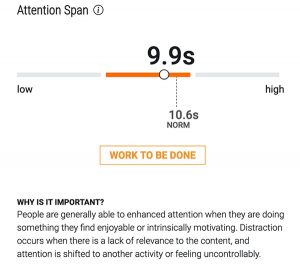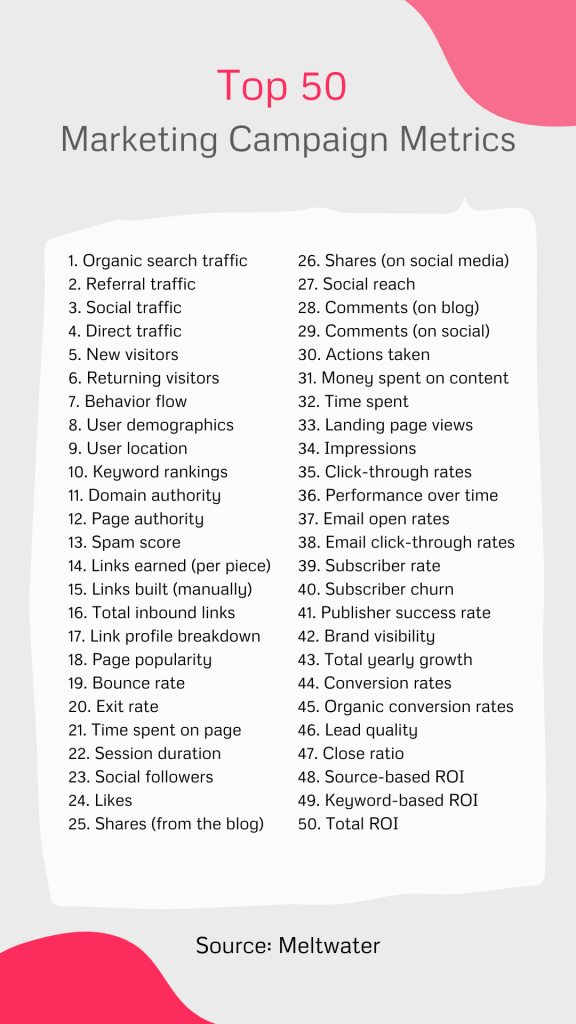Is your content good enough for your marketing campaign?
Summary
Creating good content requires a mix of creativity, resources, customer research, and data analysis. But making a marketing campaign stick includes one element that can’t be forced: emotion. Learning what triggers emotions might be the key to taking your content from good enough to great.
Key Points
- Information consumption has grown by five times compared to 50 years ago
- 21% of marketers don’t use customer data in content marketing efforts
- Marketers spend over two weeks time on creating marketing campaigns
What’s considered good content?
According to the Search Engine Journal, what’s considered good content follows five standards:
- It has video: Rather than making the audience read what they should know, video shows the audience what they should know
- It answers questions: The content should provide value to the audience but great content goes beyond expectations in teaching the audience something new
- It is original: Rather than tell a similar story, original content provides a unique perspective
- It is user generated: Human-to-human content provides a personal connection with the audience which adds to brand credibility
- It is intentional and results-focused: The audience knows exactly what to do after engaging with content, whether it’s visiting your website or making a purchase.
- It has strong headlines: The audience uses the headline as part of their first impression when reviewing content. It should stand out.
One could argue that a seventh standard would be: it sparks an emotion.
Why emotion matters for good content
Emotion plays a role in good content because it helps to capture the attention of an already overwhelmed audience. In fact, the “…average adult consumes five times more information every day than their counterpart 50 years ago,” making it imperative to figure out what resonates with the audience.
How do you measure “good”?
Dozens of metrics (e.g. pageviews, click-through rates, or form submissions) help to determine the success of a marketing campaign but they often require time to gather, and it’s often too late to change the trajectory of a campaign once you notice dropping or insufficient conversions.
Campaign experimentation such as cutting out certain parts of content can help to identify what resonates but it can only go so far if not tied to data analysis. Yet, 21% of marketers don’t use data on customers to personalize their content marketing efforts (Small Business Trends).
However, measuring attention span can help determine which content assets of a marketing campaign are most effective.
What is attention span and how do you measure it?
Attention span, as it relates to marketing campaigns, is the amount of time a person stays focused on the campaign content without interacting with other stimuli.
Capturing attention span is possible using technologies such as artificial intelligence or AI. More specifically, computer vision algorithms provide an analysis of the attentive and emotional response of the audience, much like a human would see in an in-person reaction.

Three measurements help to analyze the attention span, including:
- Eye tracking to see where exactly they are looking at
- Time spent viewing the content
- Facial expression tracking to analyze the physical emotional reaction, such as a smile
Using attention span helps determine where drop-off points are as the audience views the content so that you can make data-informed decisions on how to enhance your campaigns.
What’s the process of creating good content?
Marketers constantly search for ways to be efficient in creating good content for marketing campaigns. It typically takes over 80 hours to create and execute marketing campaigns.
Creating good content comes with time and experience as the marketing team learns their audience more in depth and the audience understands the brand value and offering. Using emotional marketing techniques can help make marketing teams more agile by capturing audience feedback instantly.
Using emotional marketing to create good content
Companies use emotional marketing by tapping into a specific emotion of the audience to encourage them to take an action such as purchasing a product or service.
Super Bowl ads might represent the most famous examples of emotional marketing in play. Super Bowl 2022 had several memorable ads, including the return of one of the most infamous villains in movie history, Dr. Evil. With each 30-second spot costing about $6.5 million, emotions played a major role in determining the success of each commercial.
> Check out how the Top Super Bowl 2022 commercials measured for attention and engagement.
However, it’s important to maintain a balance when using emotions in marketing as the audience can get more caught up in the invoked emotion rather than making the connection to the brand.
AI technology combined with ad testing can help identify potential issues or opportunities to enhance marketing content by drilling down on what captures the attention of the audience and whether they fall within your target.
Leveraging technology with emotional marketing
84% of the best content creators today leverage AI tools. And 31% of marketers plan to invest in better content analytics in 2022. Technology such as emotion AI can enhance marketing campaigns by leveraging human attentiveness and emotional responses.
Emotion AI offers several benefits:
- Helps to verify you’re influencing the right target. The content doesn’t have to resonate with everyone, but it should stand out to your target audience
- Provides instant feedback and reveals unspoken feelings about how the audience truly feels about content
- Gathers reportable data to share with executive decision-makers
Want to learn more about Emotion AI tools?
Explore how to be more confident in your marketing decisions in our white paper.
DOWNLOAD YOUR FREE WHITE PAPER



































